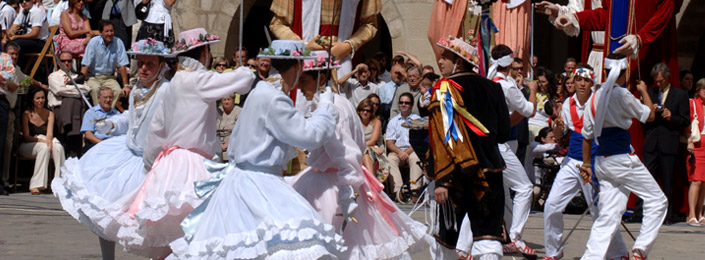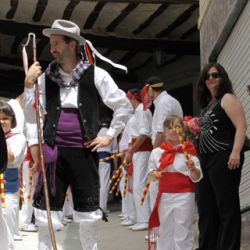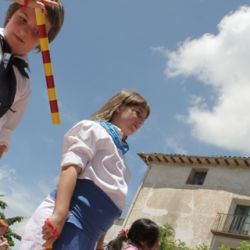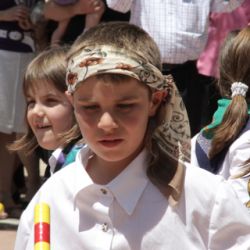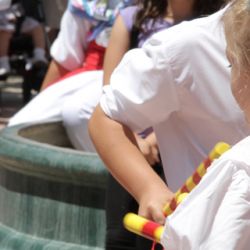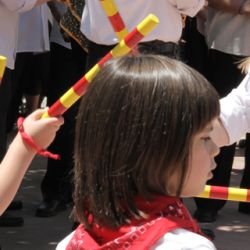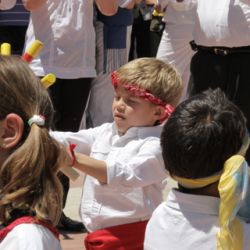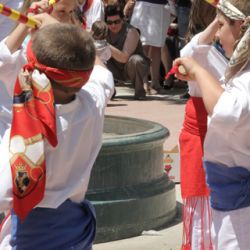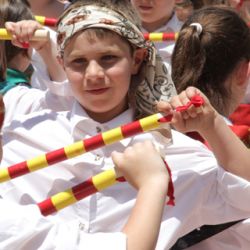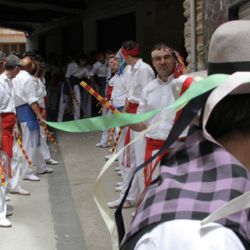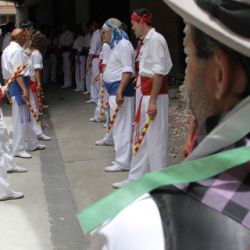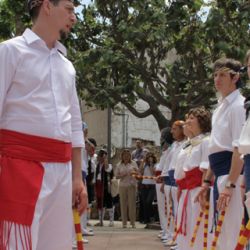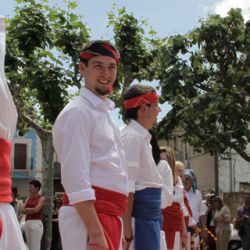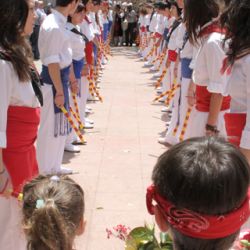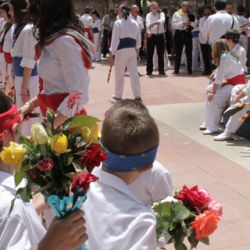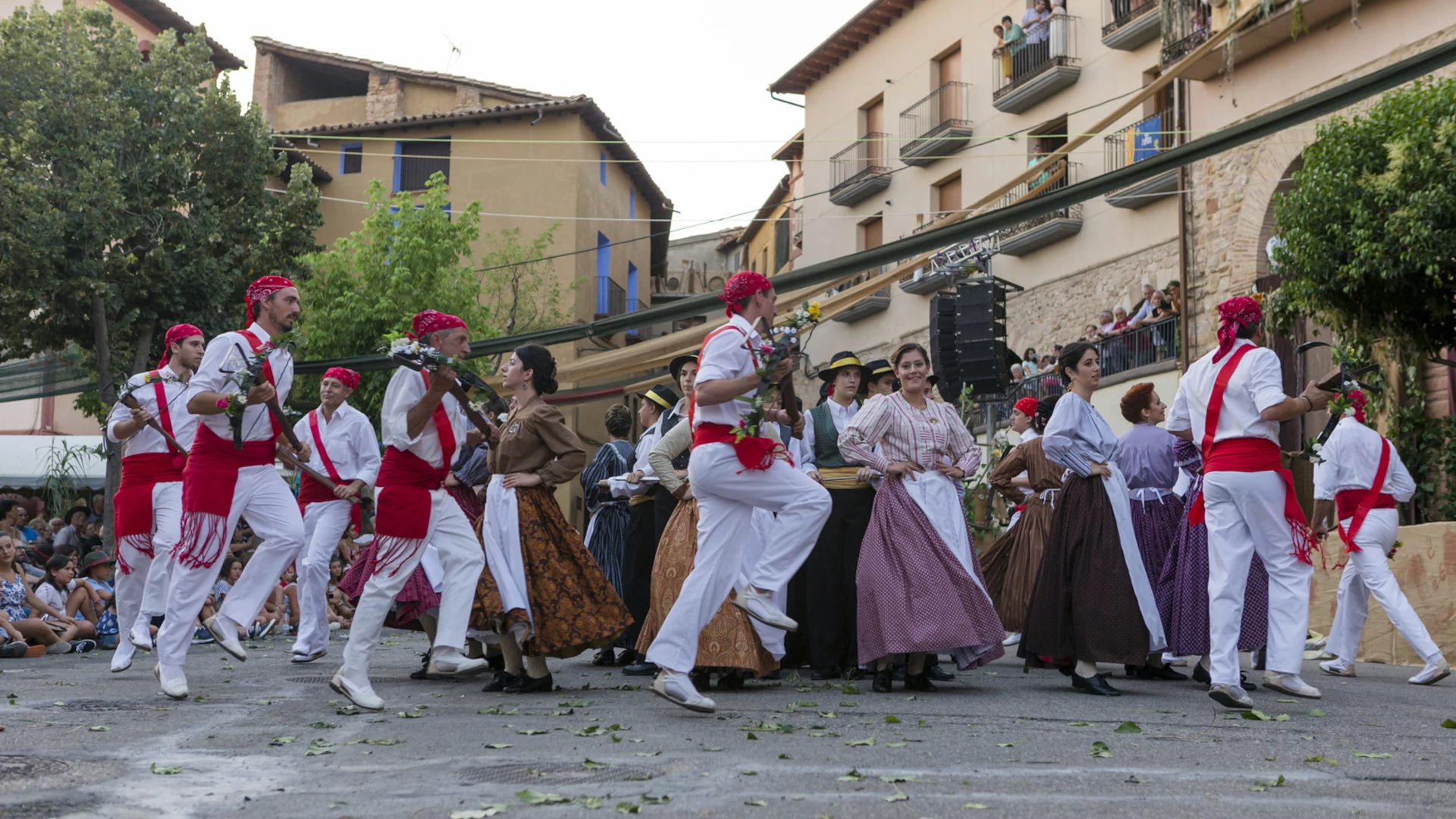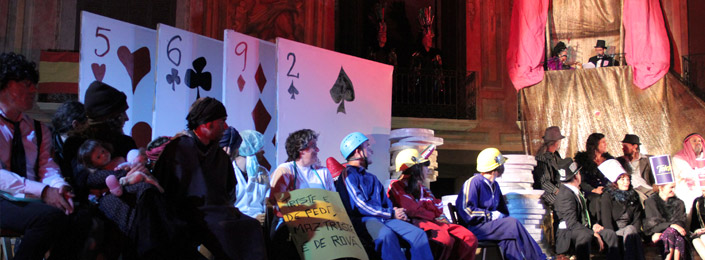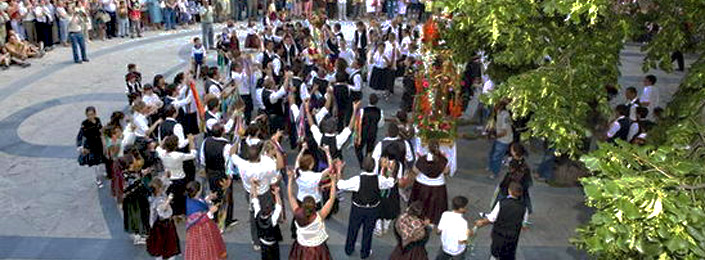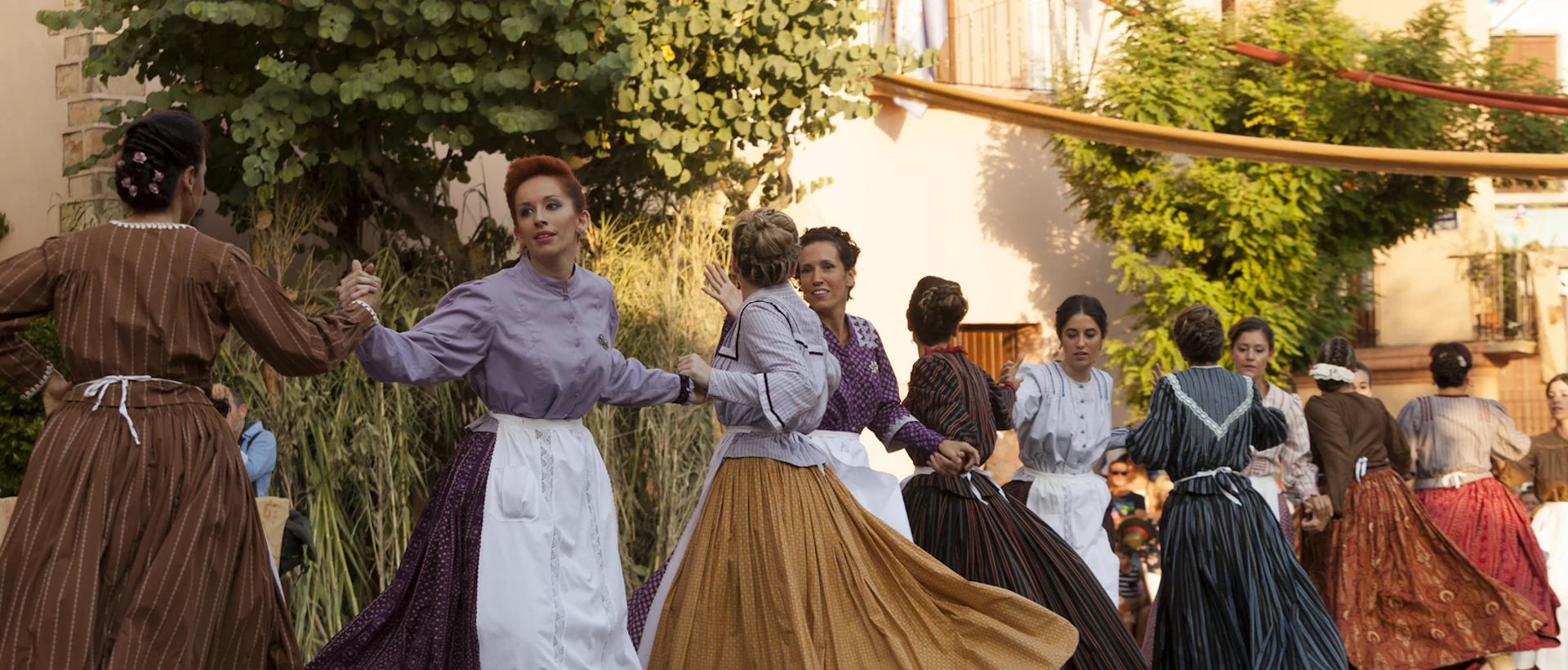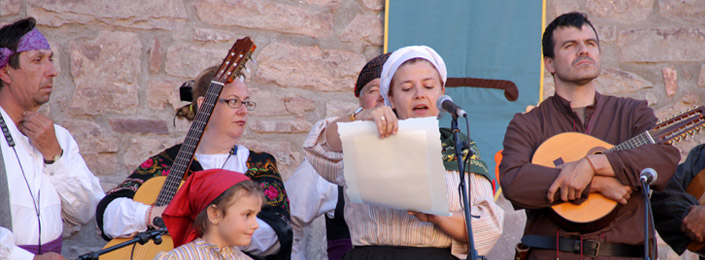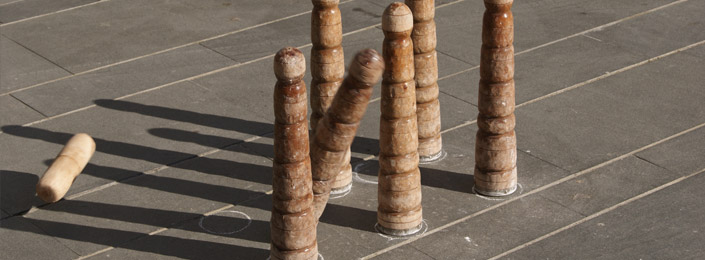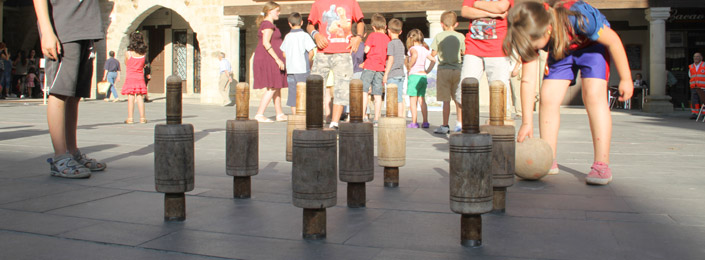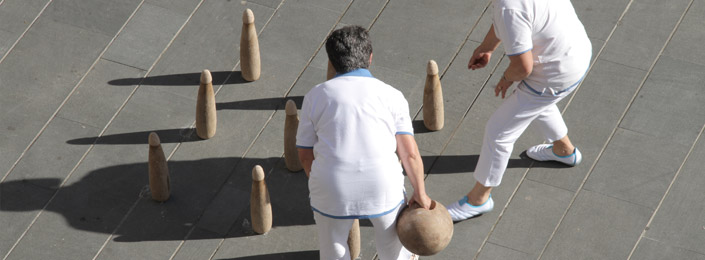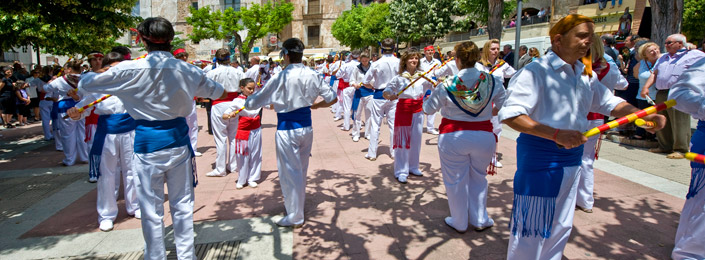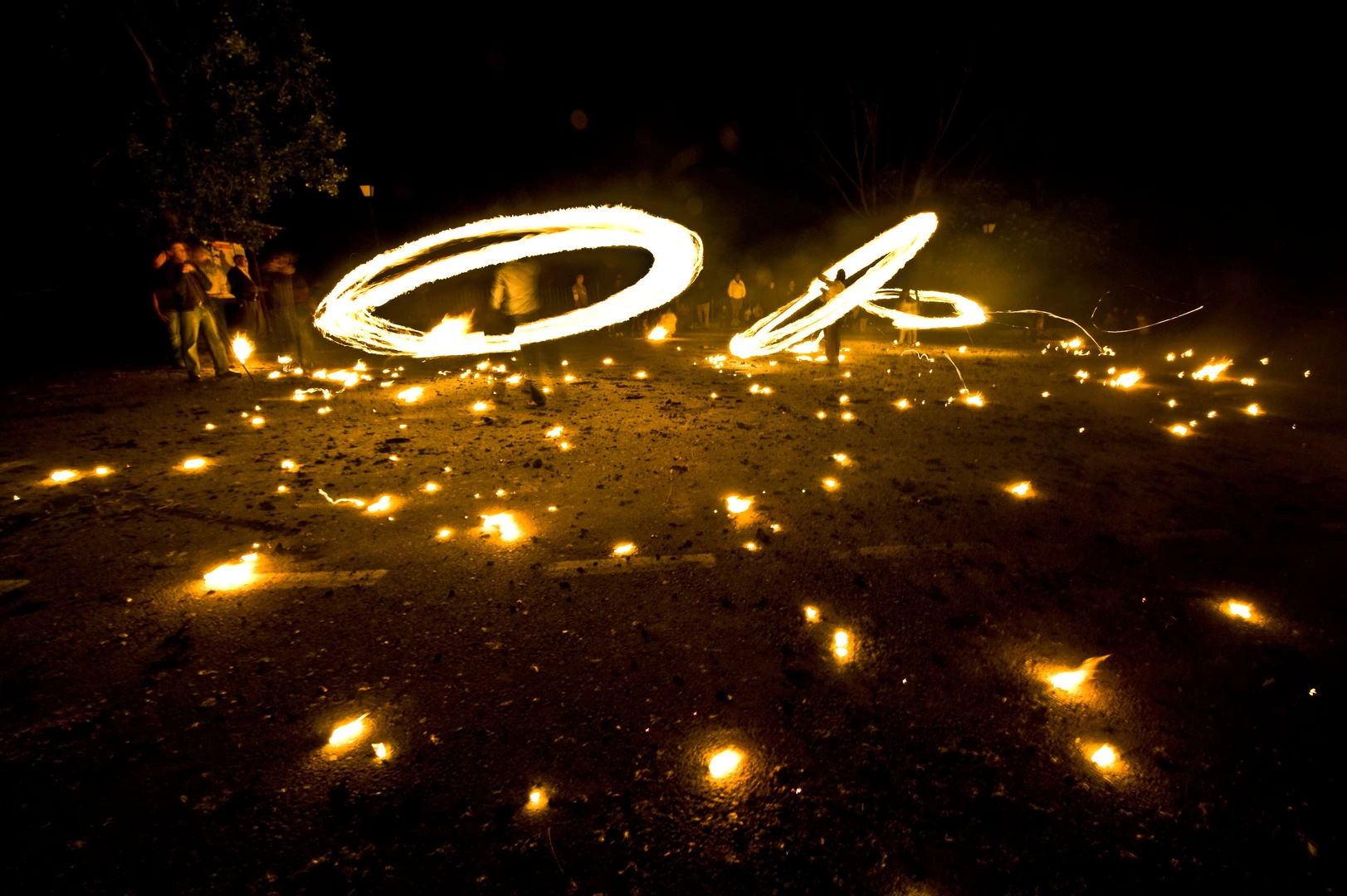The dances performed during the festivals of various origins and Kraus have respond to different justifications. The principal distinction between them is caused by the formal aspect. While two of them are exclusively composed of men who breadsticks and swords used for its definition, the other is a dance of mixed composition of various moves and less historical journey. These are:
Dance of the Palitroques
Successor of the primitive fertility dances that were performed in the farming places, the dancers figuratively hit each other with the sticks. It is only performed during the Arrive, the afternoon of September 14.
Swords Dance
Iberian origin for some authors, the dance of swords Graus is considered one of the oldest folk events in Spain. Well as being warrior, sword dances other qualities attributed to them: medicinal, as were granted healing properties of some illnesses and ailments, to conjure the spirits attracted to the storms, giving air pits, and, equally of fertility.
The dance is performed in three moves, three very different choreography known as the goldfinch, Taninana or up there and the culebreta.
Dance Ribbons
The dance of the tapes is more modern than the breadsticks and swords. According to oral tradition, the tradition is introduced in the second half grausina nineteenth century (1876), from the hand of Vincent grausino Mur, coinciding with the release of the polka all over Europe. He relates the old and now defunct dance "skirts", linked in the dances around the tree-May, with flowers and ribbons, the origin would go back to pre-Roman European societies.
The musical accompaniment for dance a polka. We used several over the years depending on the groups that played instrumental, but there are two that have been perpetuated in tradition. "Old Polka" (performed with horn and drum Ribagorza) and "New Polka" or "Zaida", played by band, and that is currently used.
Formerly, the frame danced the "middle", dressed in the traditional "flying suit", changing in 1947 to eight mixed pairs, and in turn the costumes of dancers in traditional costume by grausino, a variant of Aragon.
This dance is composed of the following changes:
-
·Ribbons", where couples dance around a tree in May, with flowers and ribbons, braids and unraveling;
-
"The Rails", in which the dancers dance in a circle intersecting each other and turning on themselves holding hands;
-
"The basket", in which the eight dancers, dancers, then moving to the center of the circle to dance revolving around a ring;
-
"Greetings", as couples dance one by one inside the circle, greeting the other couples;
-
And finally, "The Crossing" and "The Collection", where couples left the band in a circle to take other couples followed by splitting it into lines of men and women, and crossing each other to end up being collected by repatanes and and finish the dance.
|
|
From 12 to September 15 in honor of Santo Cristo and San Vicente Ferrer, are declared of National Tourist Interest. |
